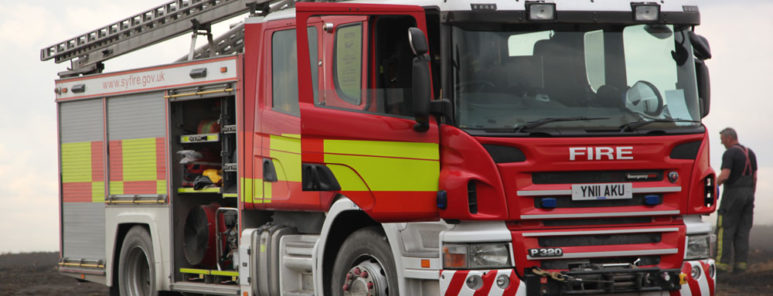Firefighters tackling a blaze on Hatfield Moor for more than 10 days say the incident has moved to a new phase.
South Yorkshire Fire & Rescue says the incident is under control and that firefighters are now working systematically to fully extinguish the blaze.
National resources, including high volume pumps and specialist advisors, have been brought in to provide the most effective response possible to the incident.
Crews have worked with partners including Doncaster Council and Natural England to create a perimeter of fire breaks and hose reels around the site of the fire- which covers nearly 16km sq.
Firefighters are then dividing the perimeter into segments and methodically working through each section to ensure the deep seated fire is fully extinguished and does not reignite.
A helicopter has also been helping fire crews, by ferrying water from nearby lakes to douse hot spots.
Officers have warned though that they expect to be on site for several days to come- and asked for the public’s help to prevent further wildfires.
Area Manager Stewart Nicholson, said: “What we really need to public to do right now is listen to our advice. Whilst the cause of this incident is not yet known, people visiting the countryside anywhere in South Yorkshire should leave BBQs at home and dispose of cigarettes safely to prevent further incidents like this one.”
Damian Allen, Chief Executive at Doncaster Council, added: “Hatfield Moors are important to Doncaster, South Yorkshire and beyond. Every effort is being made by partners, including ourselves, to preserve and protect it for future generations. I would echo the call to people to stay away from the moors no matter how enticing they might be, particularly when the sun is out. Please stay away.”
Hatfield Moors forms part of the largest area of lowland raised peat bog in the UK and is the remnant of a large wetland from thousands of years ago.
The internationally significant habitat is home to rare and unique species including the nightjar and hobby birds, adders, specialist trees and plants including wild cranberries, bog moss and cotton grasses.
As the incident moves into the next phase Natural England, who own the site, Doncaster Council and other responders are looking at recovery action and plans to achieve restoration.

